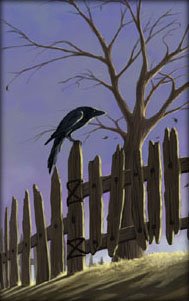
Recently, Alec Couros, in preparation for a presentation to his faculty, tweeted the question,"What does your network mean to you?". As a tribute to the vitality of his network, the responses (twice) produced a host of comments (collected in a Voicethread here) to answer the question.
As a self-proclaimed digital primitive, I began to answer the question with analogs to the Ecosystem component of the Biology content I teach. If the internet has become the landscape of our Personal Learning Environment (PLE), then I will employ a Synectics strategy I use with my students and create the metaphor; "Networks as biological communities."
We might define a biological community as all the interacting species within a habitat (or biotope). My learning network is a community of interacting individuals within my learning environment. Now here, I first rushed to consider that each individual member of my network would represent a different species. After a bit of mental wrangling, I realized that was incorrect. I should consider each person in my network as a member of a population which is "a group of individuals of the same species". What defines a species in this analogy and the identification of which species inhabit our "environment" will take some work. (I'm thinking a wiki may aid in this discussion).
Alec utilized the diagram above, which he had developed some time ago, as the visual for the Voicethread. Entities at the perimeter of the diagram (Web 2.0 "tools" if you pardon the expression) are ways in which other individuals in our networks perceive us and interact with us. They represent codes for who we are, thus, in the analogy, our DNA. As is true for our DNA, these codecs are able to be replicated, mutable and adaptive and in light of changes in the environment, some become more favorable than others. For example, where a web page once was the dominant form of expressing oneself, in a 2.0 environment, blogs and wikis are more favorable. Thus, blogs and wiki are selected for fitness in this environment and increase in frequency while web pages are selected against and so their frequency decreases.
This also bring in to question the definition of an interaction. What must occur in order to qualify as an interaction? Is the reading of a Tweet considered an interaction or would you have to respond to the tweet in order to qualify? Consider this, while I was unable to respond to the Voicethread directly with a comment, this blogpost was generated in response to the tweet. Some time will have to spent on categorizing the type of interactions within the network.
Why take so much time to develop the analogy this far? One, to answer the original question for myself. Two, I believe if I can fine tune the components of the analogy, there may be some ecological algorithms to develop metrics for assessing our Networks and Personal Learning Environments.







1 comment:
Greatt reading this
Post a Comment